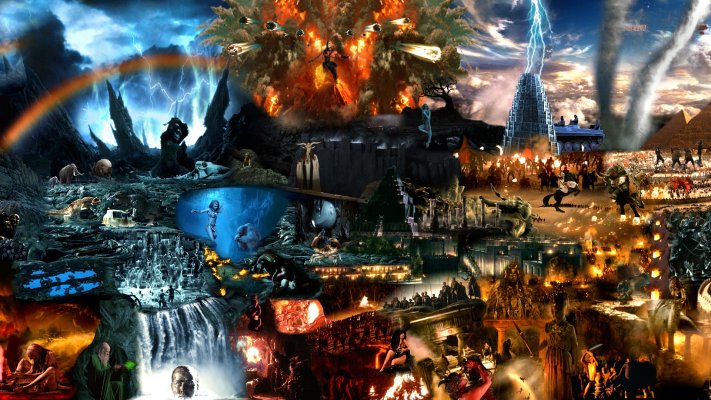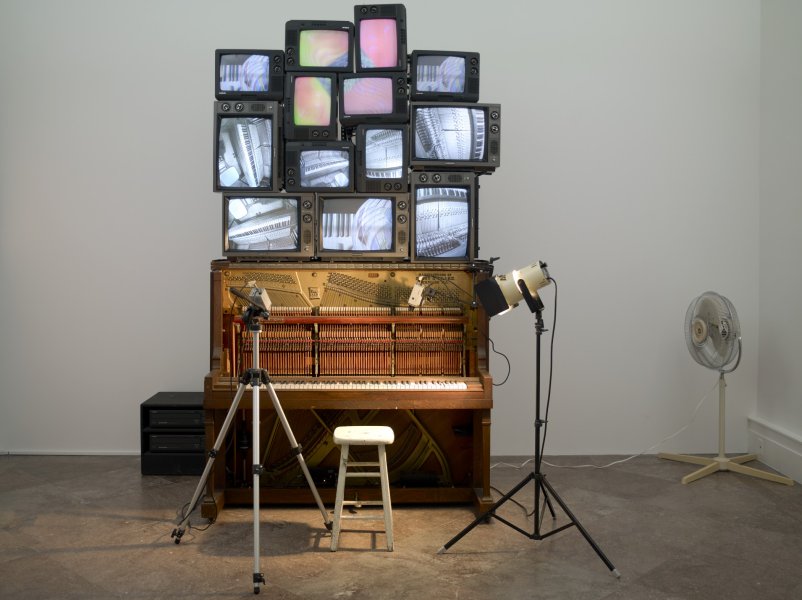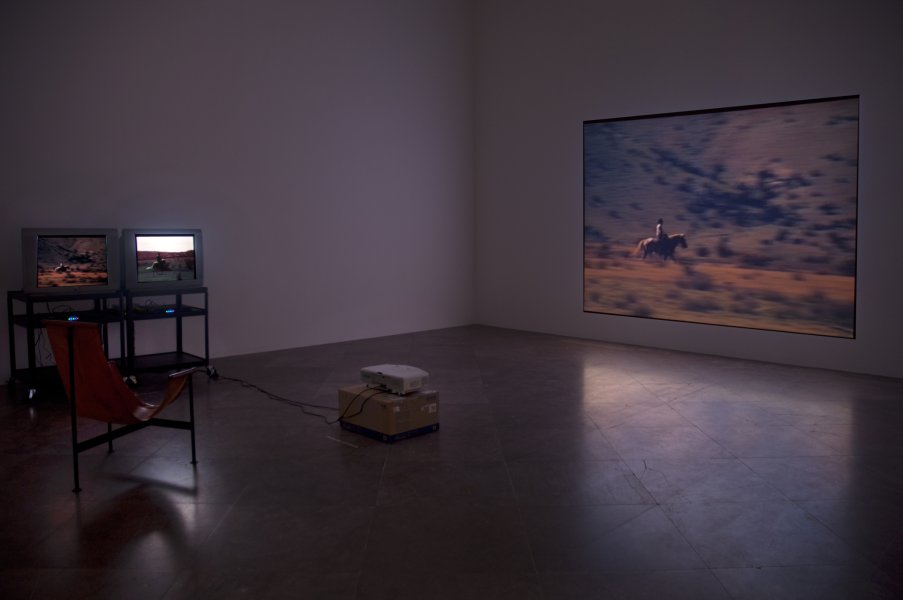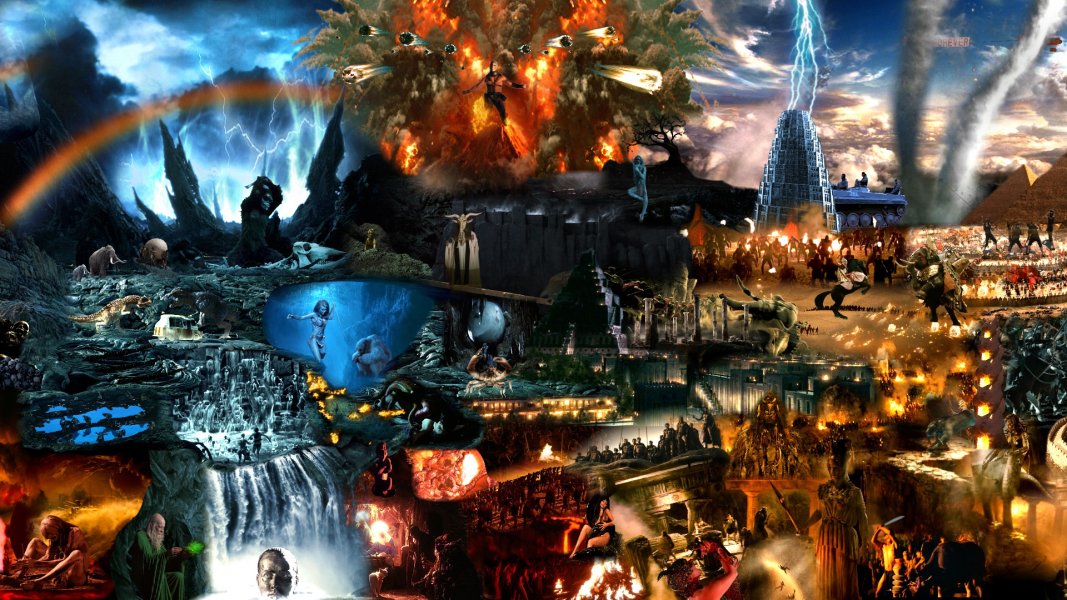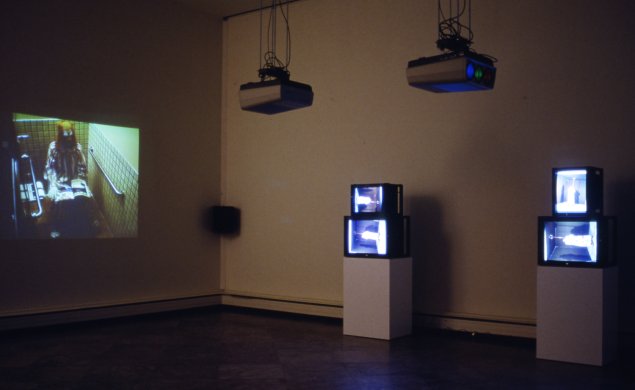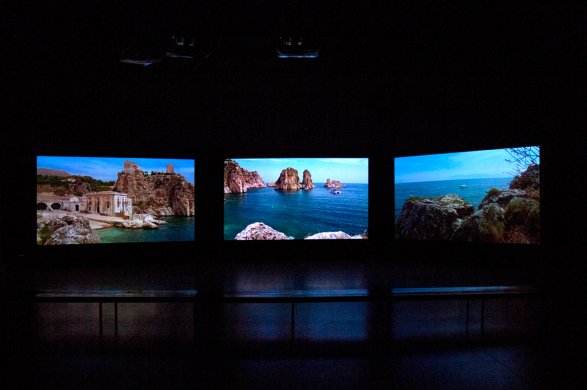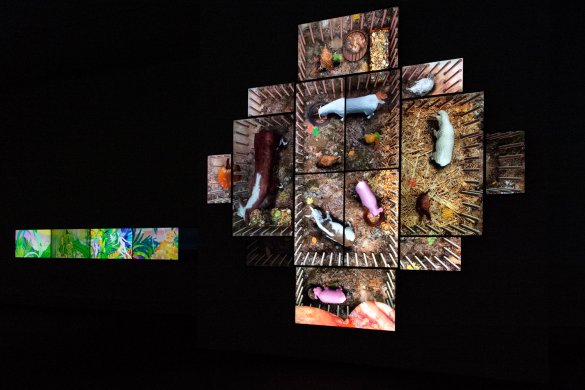With the Oscars coming up on Sunday, February 26, we are highlighting some of the film, video, and new media works in our collection, as well as some of the exhibitions that have focused these works.
The first work focusing on "new technologies" to enter the Albright-Knox's collection was Nam June Paik’s Piano Piece, which was both created and acquired in 1993.
Three years later, in 1996, the special exhibition Being & Time: The Emergence of Video Projection explored the role and development of new technology in the art of Willie Doherty, Gary Hill, Bruce Nauman, Tony Oursler, Diana Thater, and Bill Viola. While none of the featured works were part of the museum’s collection at the time, the museum did acquire Viola’s The Messenger, 1996, from a separate project: 1997’s New Room of Contemporary Art: Bill Viola’s Messenger.
Many works in new media entered the museum’s collection beginning in 2004, including Bruce Nauman’s seminal work Green Horses, 1988, and Marco Brambilla's Evolution (Megaplex), 2010, a 3D work that includes elements from between 300 and 500 mostly B-list films.
In 2011, Videosphere: A New Generation highlighted the museum’s recent acquisition of new media works with various styles and approaches, including video, film, computer animation, and/or the repurposing and modification of old technology, featuring 26 works by 24 artists.
Most recently, 2015's Screen Play: Life in an Animated World examined the work of contemporary artists who use the techniques, technologies, and tropes of animation as tools in their practices, featuring almost 50 film, video, and immersive installations by more than three dozen artists. Screen Play was accompanied by the Albright-Knox's first digital catalogue, which features video clips from some of the works.
